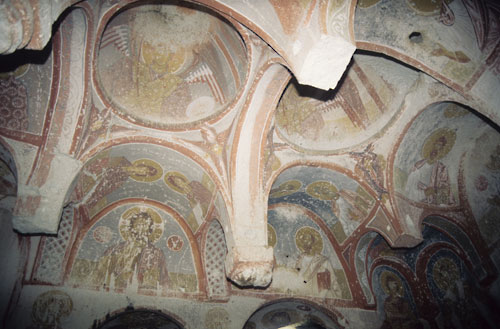642.001
Problems in Byzantine Art: The Art and Architecture of Byzantine Cappadocia
M 1:00-4:00pm
270 Tappan
3 Credit Seminar

This graduate research seminar investigates the art, architecture, and archaeology of Cappadocia, one of the most fascinating provinces on the eastern frontier of the Byzantine Empire. This region now located in central Turkey offers a rich array of distinctive material preserved in its unusual landscape of volcanic rock formations, which was once inhabited in the Byzantine period by a local population who carved their dwellings and places of worship into the living rock. Ever since the earliest European explorers of the eighteenth and nineteenth centuries discovered this exotic locale, Cappadocia has been understood as a retreat for eastern Christian monks. In the twentieth century, art historians have focused mostly on the dozens of painted churches found throughout the region in order to document and analyze problems in style, iconography, and patronage of monumental, ecclesiastical painting for which little evidence exists elsewhere in the Byzantine Empire especially during the Middle Byzantine period. More recently, the region has come under vigorous scrutiny. The wider, architectural setting in which the churches are situated is being investigated as a source for understanding Byzantine domestic architecture, settlement patterns, and secular use of space. We will cover a broad range of topics. Cappadocia's many masonry and rock-cut churches are discussed in terms of developments in a variety of plan types. The problems posed by the style, iconography, and patronage of their painted interiors and issues of dating will also be studied. Other topics include the region's geology and geomorphology as well as the human impact on the landscape. The engineering, date and purpose of the region's underground cities will be investigated and placed within the global heritage of rock carved traditions. The form and function of ceremonial and utilitarian spaces in Cappadocia's settlements and the metropolitan and cross-cultural influences on the region, including developments in Seljuk architecture, will also be considered.

